-
Article

-
Identification of Latent Travel Pattern in Seoul Using Mobile Phone data
서울시 생활이동데이터를 이용한 잠재적 통행유형 분류
-
HAN, Sangjin, SHIN, Keonwoong, SONG, Wonbang
한상진, 신건웅, 송원방
- The aim of this paper is to classify characteristic of trips with high homogeneity using living-population data based on mobile signal data. …
본 연구는 모바일 통신 데이터를 기반으로 추출한 생활이동데이터를 이용하여 다양한 통행유형들 중 동질성이 높은 특징적인 통행유형이 어떤 것인지 파악하고자 시도되었다. 이를 위해 …
- The aim of this paper is to classify characteristic of trips with high homogeneity using living-population data based on mobile signal data. 24,697,645 samples were classified by latent class analysis, a descriptive statistical model, and the model showed good fit and described characteristics of the classes well when classified into five classes. The classified classes are as follows: commuting trip, elderly trip, going home trip, leisure trip, and business trip. Among the different groups, it is noteworthy that the share of elderly trip is 23.3%, making it the second most important trip type after commuting trips (24.9%). This shows that the elderly are more socially active than in the past, as the number of people aged 65 and over has increased significantly in recent years. Therefore, tailored transportation policies for older populations are needed in addition to the free subway rides, and to do so, closer analysis of the travel characteristics of the aged people should be the first step.
- COLLAPSE
본 연구는 모바일 통신 데이터를 기반으로 추출한 생활이동데이터를 이용하여 다양한 통행유형들 중 동질성이 높은 특징적인 통행유형이 어떤 것인지 파악하고자 시도되었다. 이를 위해 24,697,645건의 샘플을 설명적 통계모형인 잠재계층분석으로 유형을 분류하였다. 그 결과 5개 계층으로 분류하는 것이 모형의 적합도도 높고 계층별 특징을 잘 설명할 수 있는 것으로 나타났다. 5개 계층은 통근 통행, 고령자 통행, 귀가 통행, 여가 통행, 업무통행 순으로 나타났다. 가장 두드러진 특징은 고령자 통행의 비중이 23.3%로 통근 통행(24.9%) 다음으로 중요한 통행유형으로 분류된 점이다. 이는 최근 65세 이상 인구가 크게 늘어나면서 고령자의 사회적 활동이 과거와 크게 다르다는 점을 잘 보여준다. 이는 향후 교통정책에서 고령자 맞춤형 정책이 강조될 필요가 있음을 시사한다.
-
Identification of Latent Travel Pattern in Seoul Using Mobile Phone data
-
Article

-
Study on Expressway Traffic Volume Prediction Based on Socio-Economic Indicators Using Deep Learning
딥러닝을 활용한 사회경제지표 기반 고속도로 교통량 예측 연구
-
PARK, Chulhyun, KIM, Junghyun
박철현, 김정현
- Expressway flow and safety management, crucial to a nation’s economy, are essential components of traffic management. To this end, the Korea Expressway …
국가 경제의 대동맥인 고속도로의 원활한 흐름과 안전 관리는 교통관리를 위한 필수적 요소이다. 한국도로공사는 이를 위해 교통상황을 예측하여 제공하고 있다. 본 연구는 교통상황 …
- Expressway flow and safety management, crucial to a nation’s economy, are essential components of traffic management. To this end, the Korea Expressway Corporation provides traffic forecasts. This study aims to construct a traffic volume prediction model applicable to all situations by using daily traffic volume data—the most fundamental element for predicting traffic conditions—and incorporating not only commonly used time series and meteorological indicators but also socio-economic indicators. The methodology involves constructing a traffic prediction model using time series-based regression analysis and deep learning models, specifically LSTM and Transformer. The data are classified into two cases based on whether the independent variables are normalized. After predicting traffic volume for each model, the results are compared with actual traffic volume and the Korea Expressway Corporation's forecasted traffic volume. The analysis reveals that the deep learning models, LSTM and Transformer, deliver superior performance, with the Transformer model achieving the highest prediction accuracy in overall performance and in detailed analyses according to day patterns. This is attributed to the incorporation of various socio-economic indicators that reflect changing traffic volumes, as well as the application of deep learning models capable of autonomously learning the characteristics and relationships among variables. These results confirm that accurate traffic volume prediction requires not only the inclusion of socio-economic indicators but also the application of deep learning models.
- COLLAPSE
국가 경제의 대동맥인 고속도로의 원활한 흐름과 안전 관리는 교통관리를 위한 필수적 요소이다. 한국도로공사는 이를 위해 교통상황을 예측하여 제공하고 있다. 본 연구는 교통상황 예측의 가장 기초가 되는 일교통량 데이터를 사용하여, 일반적으로 사용하는 시계열 및 기상지표 뿐만 아니라, 사회경제지표를 기반으로 모든 상황에 적용 가능한 교통량 예측 모형을 구축하는 것이다. 방법론은 시계열 분석 기반의 회귀분석, 딥러닝 방식인 LSTM, Transformer 모델로 교통량 예측 모형을 구축하였으며, 데이터는 독립변수 정규화 여부를 기반으로 2개 Case로 구분하였다. 각 모델별로 교통량을 예측한 후, 실제 교통량, 한국도로공사의 예측 교통량과 비교하였다. 분석 결과 각 모델별 예측 정확도는 딥러닝 방식인 LSTM, Transformer 모델이 우수한 결과를 나타내었으며, 그 중 Transformer 모델이 전반적 성능과 요일 패턴에 따른 세부 결과 분석에 예측 정확도가 가장 우수하였다. 이는 교통량이 변화하는 다양한 사회지표를 반영하였음과 함께, 변수들의 특징과 관계를 스스로 학습할 수 있는 딥러닝 모델을 적용한 결과로 판단된다. 이러한 결과를 통해 정확한 교통량 예측을 위해서는 사회경제지표를 포함하는 것 뿐만 아니라 딥러닝 모델의 적용이 필요함을 확인할 수 있다.
-
Study on Expressway Traffic Volume Prediction Based on Socio-Economic Indicators Using Deep Learning
-
Article
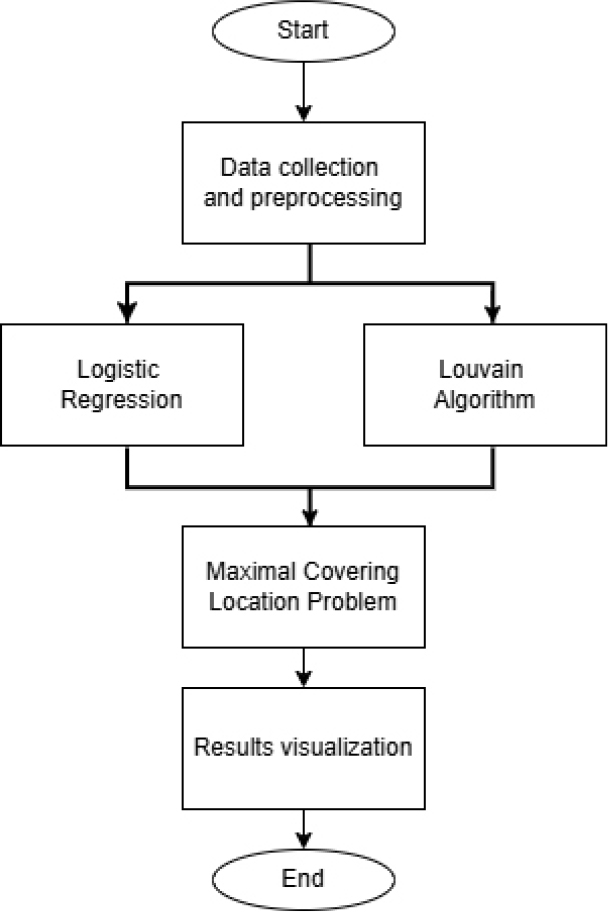
-
Optimization of Electric Vehicle Charging Station Locations Based on Community Detection and User Usage Patterns
커뮤니티 디텍션과 사용자 이용 패턴을 반영한 전기차 충전소 입지 최적화
-
OH, Hyunseok, LEE, Jooyong
오현석, 이주용
- The number of registered electric vehicles (EVs) is increasing nationwide, highlighting the inseparable relationship between EVs and their charging infrastructure. While South …
전국적으로 전기차 등록 대수는 증가하는 추세이며, 전기차와 전기차 충전 인프라는 상호 불가분의 관계를 가진다. 국내에 충전 인프라의 보급은 양호한 수준으로 평가되었으나, 대부분의 …
- The number of registered electric vehicles (EVs) is increasing nationwide, highlighting the inseparable relationship between EVs and their charging infrastructure. While South Korea's charging infrastructure is considered relatively adequate, most charging stations are equipped with slow chargers and are predominantly located in public facilities where securing land is easier. However, this approach does not fully address EV users' accessibility needs. This study aims to identify the optimal locations for EV charging stations in Suwon City, Gyeonggi-do, by focusing on improving user accessibility. The research utilizes the Louvain algorithm for community detection, logistic regression analysis, and the Maximal Covering Location Problem (MCLP) model. The Louvain algorithm was applied to identify community structures based on Suwon’s estimated traffic volume, while logistic regression analysis was used to determine key factors influencing the placement of fast and slow charging stations, including weekday and weekend charging behaviors, station density, and highway interchange accessibility. These factors were translated into demand weights and incorporated into the MCLP model to optimize charging station placement. The results demonstrate that the optimal locations vary depending on budget conditions and provide enhanced accessibility compared to existing infrastructure. This study offers policy insights for the effective placement of EV charging stations, emphasizing the need for data-driven approaches to integrate charging stations with transportation networks and improve user accessibility.
- COLLAPSE
전국적으로 전기차 등록 대수는 증가하는 추세이며, 전기차와 전기차 충전 인프라는 상호 불가분의 관계를 가진다. 국내에 충전 인프라의 보급은 양호한 수준으로 평가되었으나, 대부분의 충전소가 완속 충전소로 구성되어 있고 부지확보가 용이한 공공시설 위주로 설치되어 있어 전기차 사용자의 접근성이 충분히 고려되지 못했다는 한계가 있다. 본 연구는 경기도 수원시를 대상으로 전기차 충전소의 최적 입지를 선정하는 문제를 다루며, 전기차 사용자의 접근성을 반영한 최적의 충전소 위치를 찾는 것을 목표로 한다. 이를 위해 Louvain 알고리즘, 로지스틱 회귀분석 그리고 MCLP(Maximal Covering Location Problem) 모델을 이용하여 최적 입지를 도출하였다. 커뮤니티 디텍션 기법 중 Louvain 알고리즘을 활용하여 수원시 추정 교통량을 반영한 커뮤니티 구조를 도출하였으며, 로지스틱 회귀분석을 통해 급속 및 완속 충전소 설치에 영향을 미치는 주요 요인을 개별적으로 분석하였다. 분석된 주요 요인으로는 평일과 주말의 충전 행태, 충전소 밀도, 고속도로 IC 접근성이 포함되었으며, 이를 기반으로 충전소 입지 확률을 정량화하여 MCLP의 수요지 가중치로 활용하였다. 분석 결과, 충전소의 최적 입지는 예산 조건에 따라 다양한 범위의 커버리지를 제공할 수 있는 것으로 나타났다. 또한, Louvain 알고리즘을 적용한 최적 입지 모델은 기존 충전소 분포와 차별화된 결과를 보였으며, 이는 전기차 사용자의 접근성을 향상시키고 충전소 수요를 충족하는 데 기여할 수 있다. 본 연구는 전기차 충전소 최적 입지와 관련된 정책적 시사점을 제시하며, 전기차 사용자의 접근성을 높이고 교통 네트워크와의 연계를 고려한 최적 위치 선정의 중요성을 제시한다.
-
Optimization of Electric Vehicle Charging Station Locations Based on Community Detection and User Usage Patterns
-
Article
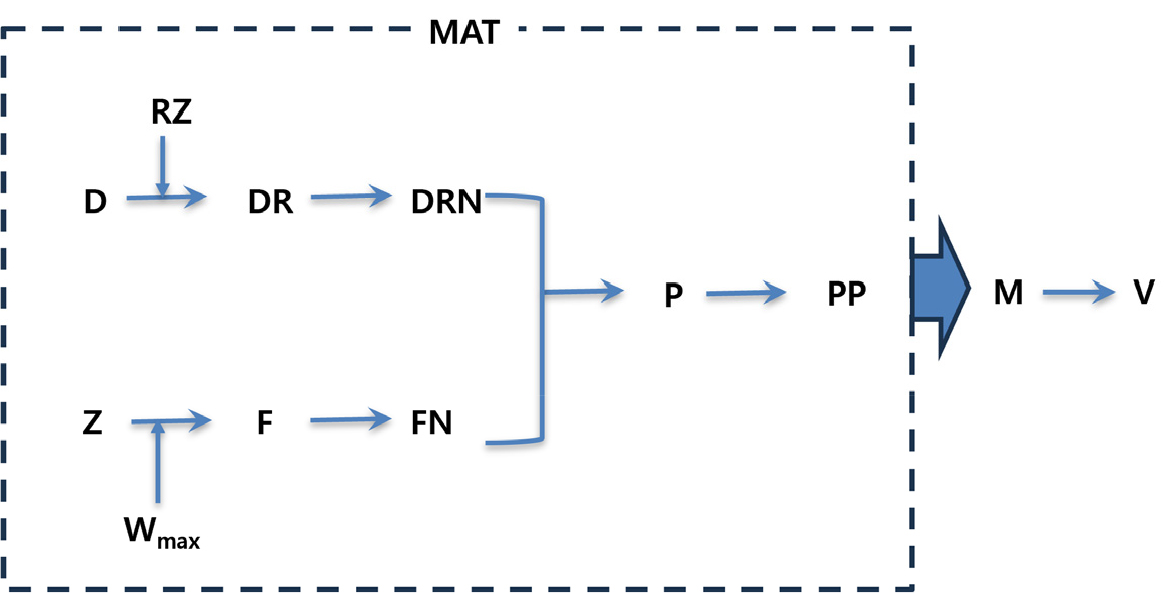
-
Optimal Red-Zone Planning to Prevent Swamping in Demand-Responsive Transit Operations: Using Transition Matrices and Genetic Algorithms
수요대응형 대중교통 서비스의 늪 현상 방지를 위한 최적 레드존 설정: 전환행렬과 유전알고리즘을 활용하여
-
KIM, Hyunmyung, BELLEMANS, Tom, CHO, Hyoyoung, JEON, Wootaek, CHOI, Jaeheon, JOH, Chang-Hyeon
김현명, 벨러만스톰, 조효영, 전우택, 최재헌, 조창현
- Demand-response transit (DRT) is known to be an efficient complement to traditional bus service due to its flexibility in space and time. …
수요대응형 대중교통(DRT) 서비스는 시공간의 유연성으로 기존 버스 서비스의 효율적인 보완 수단으로 알려져 있다. 그러나 일부 운행 구간에서 DRT 차량이 갇혀서 나오지 못하는 …
- Demand-response transit (DRT) is known to be an efficient complement to traditional bus service due to its flexibility in space and time. However, DRT vehicles can get stuck in a “swamp” on some routes, where high demand in the area prevents them from exiting to other areas. One important purpose of DRT is to serve areas that are not well served by public transportation due to low demand. The presence of swamps means that this purpose is not well served. To mitigate this problem, service within swampy areas can be restricted, but it is difficult to know which bus stops to restrict to swamps before the service is launched. This paper proposes a method to infer DRT vehicle movements using only the demand and travel cost information of stops in the service area. Using the case of the Osong area in Cheongju as an example, we propose a method to construct an optimal set of bus stops that constrain vehicle deployment through a genetic algorithm to minimize the difference in service appearance between stops.
- COLLAPSE
수요대응형 대중교통(DRT) 서비스는 시공간의 유연성으로 기존 버스 서비스의 효율적인 보완 수단으로 알려져 있다. 그러나 일부 운행 구간에서 DRT 차량이 갇혀서 나오지 못하는 ‘늪’현상이 발생할 수 있는데, 이는 해당 구간의 높은 수요로 인해 운행 중인 차량이 그 외의 지역으로 빠져나오지 못하기 때문이다. DRT의 중요한 목적 중 하나는 수요가 적어 대중교통의 서비스 수준이 높지 않은 지역에 서비스를 제공하는 것이다. 늪의 존재는 이 목적이 잘 달성되지 않음을 의미한다. 이 문제의 완화를 위해 늪 구간 안의 서비스에 제한을 두어야 하나, 서비스 개시 전에는 어떤 버스 정류장들을 늪으로 제약할지 알기 어렵다. 이 논문은 서비스 지역 내 정류장들의 수요와 통행 비용 정보만을 이용해 DRT 차량 이동을 유추하는 하나의 방법을 제안한다. 이어서, 청주 오송 지역을 사례로, 유전자 알고리즘을 통해 차량 배차를 제한하는 최적의 버스 정류장 집합을 구성하여 정류장간 차량 서비스 출현의 차이를 최소화하는 방법을 제안한다.
-
Optimal Red-Zone Planning to Prevent Swamping in Demand-Responsive Transit Operations: Using Transition Matrices and Genetic Algorithms
-
Article
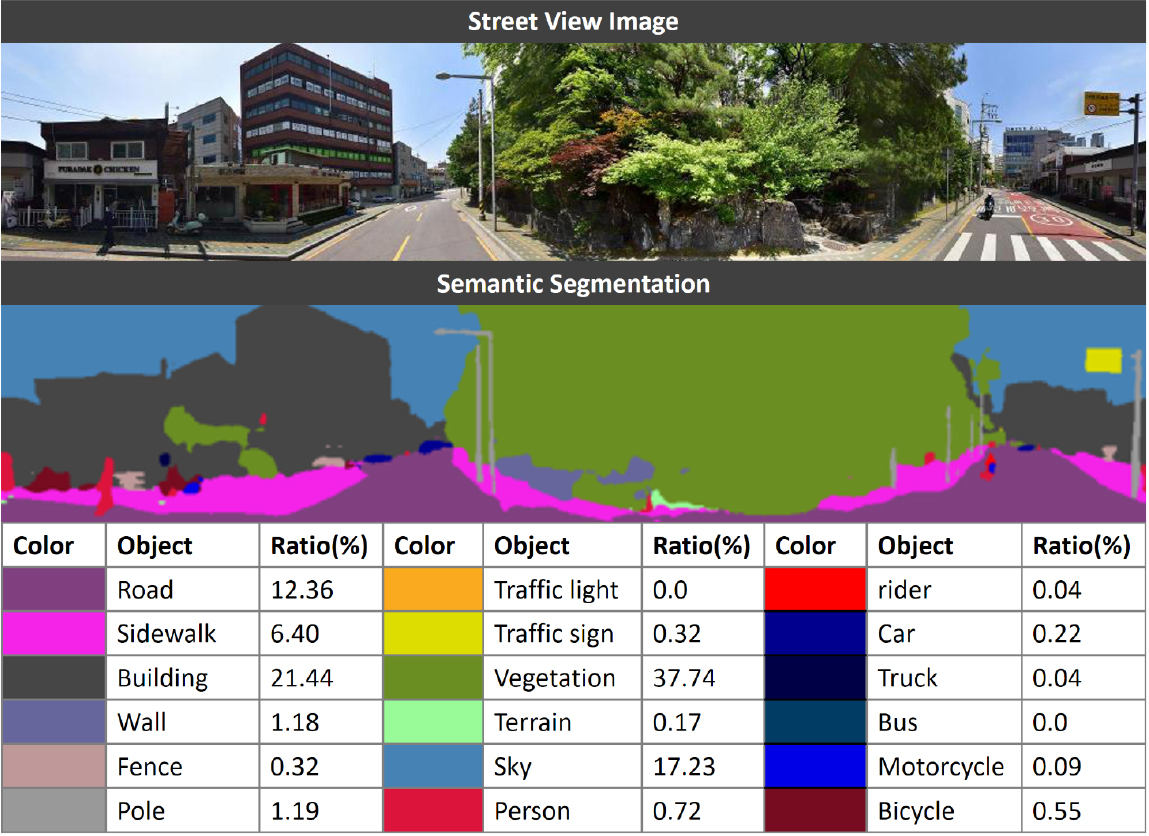
-
Analysis of Factors Influencing the Route Choice of E-Scooter Users: Focusing on the Discrepancy between Actual Usage Paths and Shortest Paths
전동킥보드 경로선택에 영향을 미치는 주행환경 분석: 실제 이동경로와 최단경로의 차이를 중심으로
-
KIM, Hyewon, LEE, Sugie
김혜원, 이수기
- The COVID-19 pandemic has accelerated the adoption of personal mobility (PM) devices, with shared e-scooters emerging as a socially distanced mode of …
COVID-19 확산과 사회적 거리 두기 정책으로 인해 개인형 이동수단(Personal Mobility, PM), 특히 공유 전동킥보드의 이용이 급증하였다. 그러나 국내 자전거도로의 대부분은 자전거·보행자 혼용도로 …
- The COVID-19 pandemic has accelerated the adoption of personal mobility (PM) devices, with shared e-scooters emerging as a socially distanced mode of travel. In South Korea, where bicycle lanes are often shared with pedestrians, e-scooter users frequently encounter mixed- traffic environments, raising concerns over user safety and infrastructure adequacy. This study examines the factors influencing e-scooter route choice in Seoul using GPS trajectory data collected from a major shared e-scooter operator. To quantify route efficiency, the Shared Route Ratio—defined as the proportion of the actual route overlapping with the shortest path—is introduced as the dependent variable. The results of multiple regression analysis indicate that nighttime trips and routes with sufficient lighting and signalized intersections are positively associated with higher shared route ratios, suggesting a preference for direct and safer travel paths. Conversely, price discounts, membership status, and proximity to riverside environments are associated with lower shared route ratios, reflecting a tendency toward more diverse or leisure-oriented routes. These findings highlight the contextual characteristics of e-scooter use within South Korea’s PM infrastructure and underscore the importance of expanding spatial separation from pedestrians, increasing dedicated lane coverage, and improving intersection- level traffic management to enhance safety and operational efficiency.
- COLLAPSE
COVID-19 확산과 사회적 거리 두기 정책으로 인해 개인형 이동수단(Personal Mobility, PM), 특히 공유 전동킥보드의 이용이 급증하였다. 그러나 국내 자전거도로의 대부분은 자전거·보행자 혼용도로 중심으로 구성되어 있어, 전동킥보드 이용자는 보도와 차도를 모두 주행하게 되며 이로 인해 보행자, 차량 운전자, 전동킥보드 이용자 모두에게 안전상의 문제를 초래하고 있다. 이에 본 연구는 국내 PM 주행환경이 전동킥보드 이용자의 경로선택에 미치는 영향을 실증적으로 분석하고자 하였다. 서울시 내 공유 전동킥보드의 실제 주행 궤적 데이터를 활용하여, 최단경로와 실제 이동경로 간의 공유 경로 비율(Shared Route Ratio)을 종속변수로 설정하고 개인·통행 특성, 물리적·인지적 환경 특성에 따른 다중회귀분석을 수행하였다. 분석 결과, 심야 시간대에 주행할수록 공유 경로 비율이 높게 나타나 최단경로를 따라 주행하는 반면, 할인 혜택을 받거나 정기회원일수록 우회경로를 선택하는 경향이 나타났다. 또한, 신호등과 가로등 밀도가 높은 지역에서는 공유 경로 비율이 증가하였으나, 수변 주행비율이 높은 경로에서는 우회경로를 선택하는 경향이 확인되었다. 이는 전동킥보드 이용자가 이동경로 선택 시 효율성뿐만 아니라 쾌적성과 여가 목적 또한 고려한다는 것을 시사한다. 본 연구는 국내 전동킥보드 주행환경을 반영하여 개인·통행 특성과 다양한 주행환경이 전동킥보드 이용자의 경로선택에 미치는 영향을 정량적으로 규명하였단 점에서 의의가 있다. 이를 통해 전동킥보드 이용자의 안전한 주행환경 조성을 위한 정책적 시사점을 제시하였으며, 향후 PM 인프라 개선 방향과 교차로 혼잡 완화, 보행자와의 공간적 분리 등의 정책 수립에 기여할 것으로 기대된다.
-
Analysis of Factors Influencing the Route Choice of E-Scooter Users: Focusing on the Discrepancy between Actual Usage Paths and Shortest Paths
-
Article
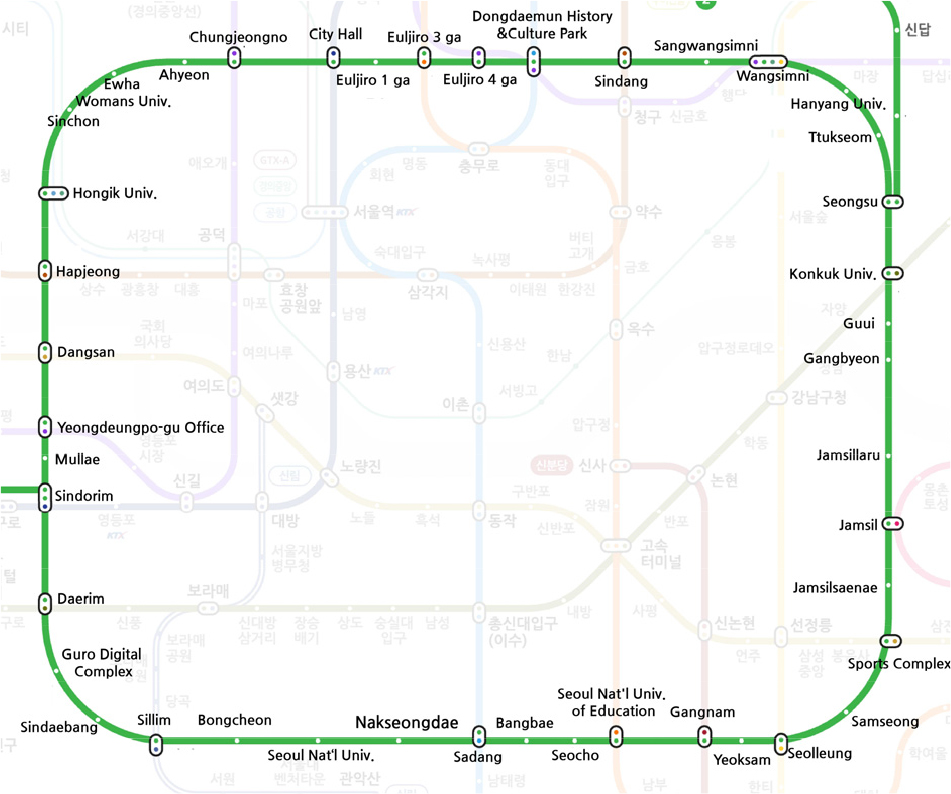
-
Evaluation of Subway Station Design from the Perspective of Wheelchair User Mobility: Using Space Syntax and Network Analysis
휠체어 장애인 이동성 관점의 지하철 역 설계 평가: Space Syntax와 네트워크 분석을 활용하여
-
KANG, Chaeeun, BAEK, Jiyun, YOO, Chaewon, KO, Dajung, KWON, Minji, KIM, Hyebin, LEE, Sugie
강채은, 백지윤, 유채원, 고다정, 권민지, 김혜빈, 이수기
- Despite efforts such as low-floor buses to improve wheelchair users’ mobility, they still face challenges in the subway, mainly due to unclear …
최근 교통약자의 이동권을 개선하기 위해서 저상버스 도입 등 다양한 노력을 하고 있음에도 불구하고 휠체어 장애인은 여전히 지하철을 많이 이용하고 있다. 하지만 지하철 …
- Despite efforts such as low-floor buses to improve wheelchair users’ mobility, they still face challenges in the subway, mainly due to unclear elevator locations and complex station layouts. This study analyzes spatial complexity and mobility for wheelchair users in Seoul Subway Line 2 using Space Syntax and network analysis. It calculates travel times from the entrance to the platform and compares accessibility between wheelchair users and non-disabled passengers. Findings include that older stations, particularly in eastern Seoul, reduce movement efficiency for wheelchair users. Complex transfer stations hinder mobility, while stations with high accessibility but long travel times tend to have exits in multiple directions. Non-disabled passengers find it easier to navigate, suggesting that station designs should prioritize clear routes for both groups. This study provides recommendations for improving subway station design to enhance accessibility for wheelchair users, contributing to more efficient and inclusive subway systems.
- COLLAPSE
최근 교통약자의 이동권을 개선하기 위해서 저상버스 도입 등 다양한 노력을 하고 있음에도 불구하고 휠체어 장애인은 여전히 지하철을 많이 이용하고 있다. 하지만 지하철 내 엘리베이터 위치의 불명확성, 경사로 부재 등으로 인해 만족도가 낮다. 복잡한 역 구조와 동선으로 휠체어 장애인의 이동이 어려우며 이에 대한 집중적인 연구가 필요하다. 따라서 본 연구는 휠체어 장애인 관점에서 지하철역 내 공간 복잡성 및 이동성을 분석하고 개선 방안을 제시하는 것을 목적으로 한다. 휠체어 장애인과 비장애인으로 나누어 Space Syntax로 서울 지하철 2호선 역사 내 공간 복잡성을 분석하였고, 네트워크 분석으로 지상 출입구에서 승강장까지의 이동시간을 계산하였다. 그리고 분석 결과를 클러스터링하여 패턴을 분석하고 이를 비교해 휠체어 장애인이 비장애인에 비해 겪는 어려움을 평가하였다. 이에 대한 주요 결론으로 첫째, Space Syntax 분석과 네트워크 분석이 휠체어 장애인의 지하철 이동성을 정량적으로 평가할 수 있는 효과적인 도구임을 입증하였다. 둘째, 오래된 역일수록 휠체어 장애인의 이동 효율성이 낮은 경향이 있었으며, 이는 주로 서울시 동쪽 구간에 밀집해 있음을 확인하였다. 셋째, 접근성이 낮은 역은 주로 복잡한 환승역임을 확인하였다. 넷째, 접근성이 높지만 이동시간이 긴 역들은 다른 역에 비해 각각의 출구가 동서남북 사방면으로 퍼져있는 경향이 있었으며, 이동시간이 짧은 역은 주로 일직선 구조를 가지는 역으로 나타났다. 다섯째 접근성이 높은 역은 비장애인이 휠체어 장애인에 비해 개방성이 높은 경향을 보였다. 본 연구는 지하철역 설계자와 운영자가 휠체어 장애인을 고려한 역 설계를 개선할 수 있도록 방향성을 제시하였으며 효율적인 시설 배치와 운영계획을 수립하는데 기여할 수 있다.
-
Evaluation of Subway Station Design from the Perspective of Wheelchair User Mobility: Using Space Syntax and Network Analysis
-
Article
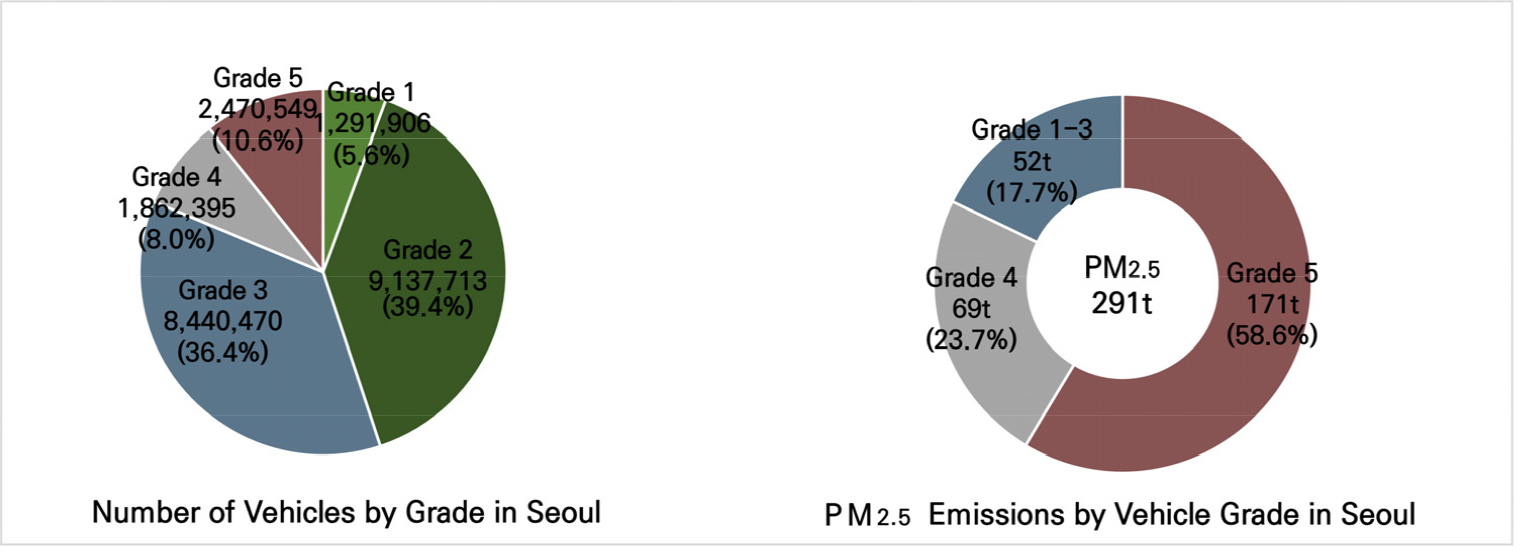
-
Estimation of PM2.5 Reduction Effects by the Expansion of Green Transportation Area in Seoul
서울시 녹색교통지역 확대에 따른 도로이동오염원 초미세먼지 감소효과 추정
-
CHOI, Seoyoung, IM, Seungbin, CHOI, Yujin, KIM, Jeonga, KO, Joonho
최서영, 임승빈, 최유진, 김정아, 고준호
- Low-emission zones are being expanded worldwide. The green transportation zone operated by the Seoul Metropolitan Government will also be expanded gradually. To …
저배출구역은 전 세계적으로 확대운영되고 있는 추세다. 서울시에서 운영하고 있는 녹색교통지역 역시 단계별로 확대운영될 계획이다. 적절한 정책시행을 위해서는 제도의 확대 운영 시행 이전 …
- Low-emission zones are being expanded worldwide. The green transportation zone operated by the Seoul Metropolitan Government will also be expanded gradually. To implement the appropriate policy, a prior impact evaluation is required before expanding and operating the system. This study aims to estimate the reduction in fine dust emissions from traffic flow and road pollution sources under the green transportation zone expansion plan, and to propose corresponding policy support measures. Using detailed vehicle registration data, O/D data was subdivided by car type, fuel type, grade, and DPF attachment, and the green transportation zone expansion plan was applied to the travle demand analysis network. The analysis assumed that restricted vehicles were not allowed to enter the restricted area and that travel patterns would not change. When calculating fine dust emissions, formulas were applied by grade, fuel type, and model year, with a detailed analysis considering the efficiency of emission reduction devices attached to grade 4 and 5 vehicles. The analysis of Seoul, Gyeonggi, and Incheon on a wide-area basis showed a decrease in VKT and fine dust in the restricted areas. Notably, when the use of Grade 5 vehicles was restricted across Seoul, fine dust levels dropped by 46.20%, showing that simply restricting these vehicles can greatly help reduce air pollution.
- COLLAPSE
저배출구역은 전 세계적으로 확대운영되고 있는 추세다. 서울시에서 운영하고 있는 녹색교통지역 역시 단계별로 확대운영될 계획이다. 적절한 정책시행을 위해서는 제도의 확대 운영 시행 이전 사전 영향 평가가 필요하다. 본연구의 목적은 녹색교통지역 확대 계획을 토대로 그에 따른 교통 흐름 변화와 도로이동오염원의 초미세먼지 감소 효과를 정량적으로 추정하고, 그에 따른 정책 지원 방안을 제시하는 것이다. 자동차 주소지 데이터를 활용하여 O/D 데이터를 차종·유종·등급·DPF 부착 여부 별로 세분화하였고, 녹색교통지역 확대 계획을 교통수요 프로그램 네트워크에 구현하였다. 운행 제한 대상 지역에 제한 차량은 진입을 못하도록 설정하였으며, 수단 전환 없이 운행을 멈춘다고 가정하여 분석이 진행되었다. 초미세먼지 배출량 산정 시에도 등급·유종·연식별로 차이를 고려하였으며 DPF를 부착한 4·5등급 차량에 대해서는 저감 장치 부착 효율을 고려하여 세밀한 분석을 진행하였다. 서울, 경기, 인천을 광역 단위로 분석한 결과, 한양도성 제한 시나리오와 서울 전역 제한 시나리오 모두 VKT 및 초미세먼지가 감소하는 결과가 나타났다. 특히 서울 전역에 5등급 차량의 운행을 제한하는 경우 서울의 초미세먼지 감소율은 46.20%로, 5등급 차량의 운행만 제한하더라도 초미세먼지 감소 효과가 큰 것을 확인하였다.
-
Estimation of PM2.5 Reduction Effects by the Expansion of Green Transportation Area in Seoul
-
Article

-
Investigating Traffic Pattern Effects of Variable Speed Limit System under Adverse Weather Conditions
악천후 기상 조건에서 가변형 속도제한 시스템의 교통 패턴 효과 분석 연구
-
LEE, Songha, PARK, Juneyoung, YEOM, Chunho, PARK, Hyunjin
이송하, 박준영, 염춘호, 박현진
- Variable speed limit system (VSL), one of the active traffic management strategies, has modified the speed limit at expressway, and reduces likelihood …
능동적 교통 관리 전략 중 하나인, 가변형 속도제한(VSL, Variable Speed Limit) 시스템은 기하구조, 교통. 기상 조건에 따라 고속도로 구간의 속도 제한을 조정하고 …
- Variable speed limit system (VSL), one of the active traffic management strategies, has modified the speed limit at expressway, and reduces likelihood of rear-end collisions by inducing a decrease in the speed difference between upstream and downstream sections. The implementation of a VSL system under adverse weather conditions, which often lead drivers to select inappropriate speeds compared to normal conditions, is anticipated to enhance traffic safety and its overall effectiveness. However, previous studies have utilized simulation program rather than real traffic environments, or studies analyzing changes in real drivers’ driving behavior due to the operation of the VSL system have been limited. As such, this paper has analyzed changes in traffic characteristics resulting from the operation of a VSL system under adverse weather conditions, using dynamic traffic data collected from road sections equipped with the system on domestic expressways. K-means Clustering algorithm, an unsupervised learning algorithm, was employed to consider common a traffic characteristics affected by the system. Changes in driving behavior before/ after the operation of the system were then compared and analyzed based on the identified impact area. As a result, the areas were divided into upstream, middle, and downstream sections within the system operation section, and the differences in traffic characteristics were captured by section. Also, when evaluating the operational effect of the VSL system, it was identified that the system maintained a driving speed below the speed limit under adverse weather conditions and that the speed difference between vehicles decreased. Notably, the results indicated that the speed variance upstream of the system increased compared to the middle section, due to vehicles approaching the VSL operation section. Furthermore, for the effective future operation of the system, it is essential to implement not only speed enforcement programs for the posted speed limits but also traffic safety management strategies aimed at potentially correcting drivers’ driving behaviors. The findings of this study will serve as foundational research to support expressway management and the development of related management strategies under adverse weather conditions.
- COLLAPSE
능동적 교통 관리 전략 중 하나인, 가변형 속도제한(VSL, Variable Speed Limit) 시스템은 기하구조, 교통. 기상 조건에 따라 고속도로 구간의 속도 제한을 조정하고 상/하류부 속도 차이 감소를 유도함으로써, 후미추돌 개연성을 감소시킨다. 정상적인 기상 조건과 다르게 운전자의 부적절한 속도 선택을 야기할 수 있는 악천후 기상 조건에서 VSL 시스템 적용은 교통안전의 효과를 향상할 수 있을 것으로 기대한다. 하지만, 대부분의 기존 연구는 실제 교통 환경이 아닌 시뮬레이션 분석 환경을 활용하거나, VSL 시스템 운영에 따른 실 운전자의 주행행태 변화를 분석한 연구는 제한적이었다. 따라서, 본 연구는 국내 고속도로 VSL 시스템이 운영되는 도로구간을 대상으로, 동적 교통 데이터 기준 악천후 기상 조건별 VSL 시스템 운영에 따른 교통 특성 변화를 분석하였다. 이를 위해 VSL 시스템의 영향을 받는 도로구간의 공통적인 교통 특성을 고려하기 위해 비지도 학습인 K-means Clustering 알고리즘을 사용하였고, 식별된 영향권에 따라 VSL 시스템 운영 전/후의 주행행태 변화를 비교·분석하였다. 결과적으로, VSL 시스템 운영 구간 내 상류부, 중간부, 하류부 구간으로 영향 권역이 구분되었고, 구간별로 교통 특성의 차이를 포착하였다. 또한, VSL 시스템의 운영 효과를 평가하였을 때, VSL 시스템은 악천후 조건에서 제한속도 이하의 주행속도를 유지하고 차량 간 속도 차이가 감소를 식별하였다. 특히, VSL 시스템 운영 구간에 접근하는 차량에 의해 중간부보다 상류부의 속도 편차의 크기가 증가하는 결과가 나타났고, 이 부분에 대해 향후 속도 관리 전략 수립 시 단속 구간 상류부에 대한 세부적인 안전 성능을 고려할 필요가 있다. 그리고, 향후 효과적인 VSL 시스템 운영 시, 개시된 제한속도에 대한 속도 단속 프로그램뿐만 아니라 운전자들의 주행행태를 잠재적으로 교정할 수 있는 교통안전 관리전략이 수반되어야 한다. 이 연구의 결과는 악천후 기상 조건에서 고속도로를 관리 및 관련 관리전략 수립에 관한 기초적인 연구로써 지원될 것이다.
-
Investigating Traffic Pattern Effects of Variable Speed Limit System under Adverse Weather Conditions
Journal Informaiton
 Journal of Korean Society of Transportation
Journal of Korean Society of Transportation
Journal Informaiton
Journal Informaiton - close
 Journal of Korean Society of Transportation
Journal of Korean Society of Transportation










